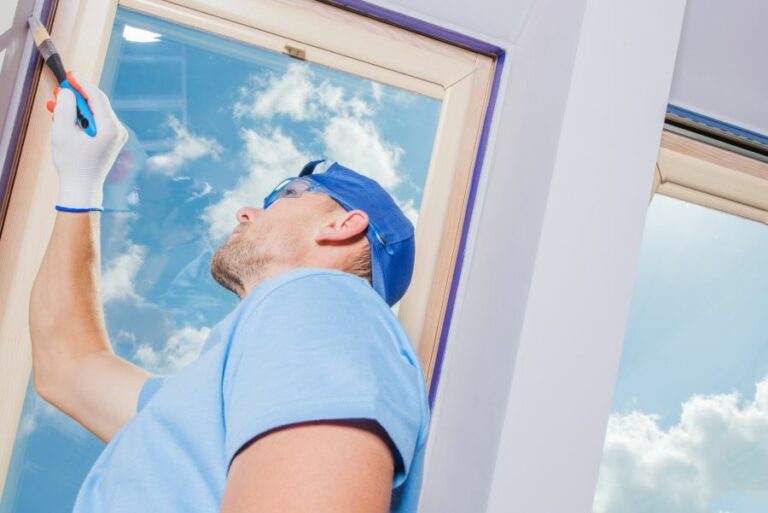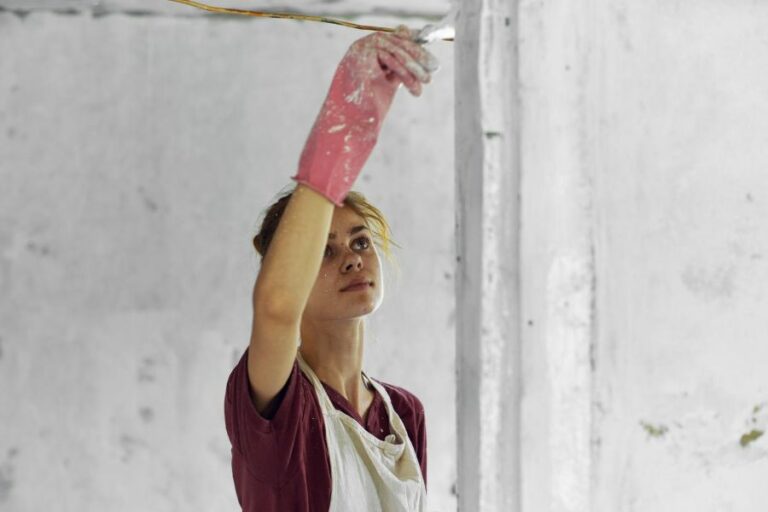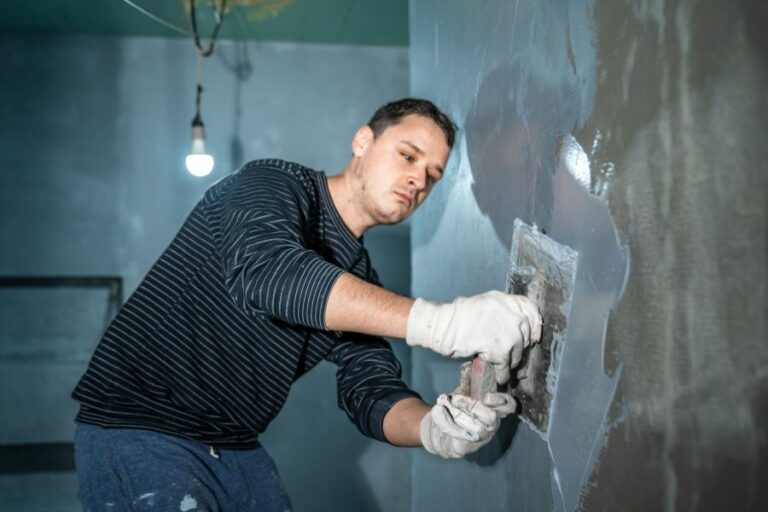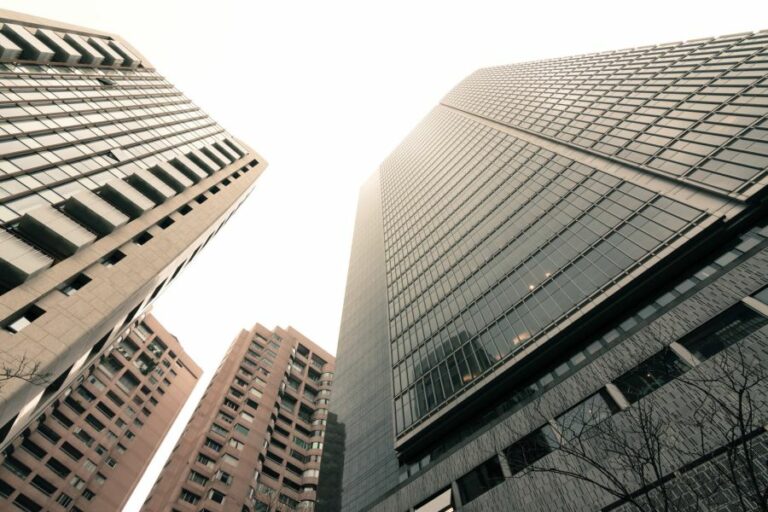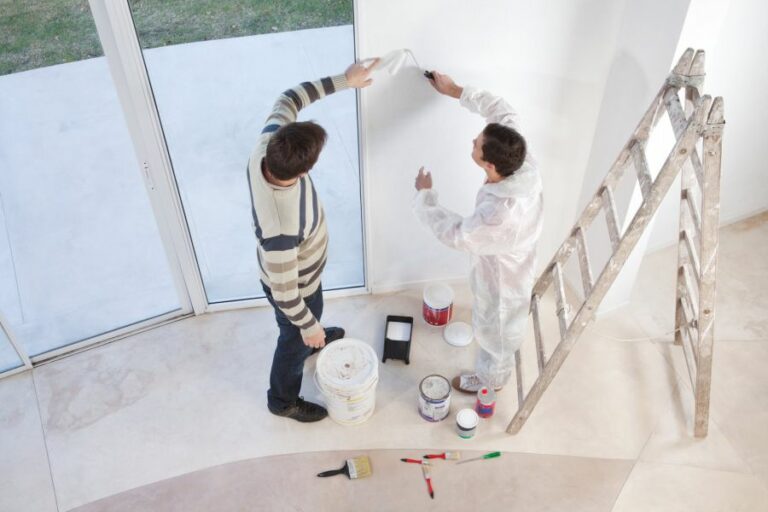Mold And Mildew Treatment Before Painting. What Pros Say
Dealing with mold and mildew before painting is essential to achieve a clean and durable finish on your walls. Good news! We have the expertise to guide you through this process, helping you eliminate these unwelcome guests and prevent their return. By following our tried-and-tested mold and mildew treatment, you can confidently paint your walls, ensuring a beautiful, healthy living space that stands the test of time.
Mold & mildew treatment before painting:
To treat mold and mildew before painting, first identify and address the source of moisture causing the issue. Ensure proper ventilation and wear protective gear such as gloves, goggles, and a mask. Remove mold and mildew stains using a commercial remover or a bleach solution, then rinse and dry the area. Apply a mold-inhibiting primer before painting, and use mold-resistant paint. To prevent future growth, address moisture issues, maintain appropriate humidity levels, and keep damp areas clean and dry.

Mold and mildew on surfaces not only look unsightly, but they can cause damage and lead to potential health hazards. Learn how to effectively treat and prep your walls to ensure your next paint job provides a long-lasting, clean finish. Read on for expert tips and tricks!
Contents
- 1 Pre-Painting Mold and Mildew Removal Techniques
- 2 The Health Risks of Mold Exposure
- 3 Mold: A Dangerous Microorganism?
- 4 Effective Mold Elimination Methods
- 5 Steps to Take When Discovering Mold in Your Home
Pre-Painting Mold and Mildew Removal Techniques
• Overview
Mold and mildew are common household problems that can cause significant health issues and damage to your property. Before painting a surface affected by mold and mildew, proper treatment and removal is crucial to ensure a durable and safe paint job.
• Identifying Mold and Mildew
Knowing the difference between mold and mildew is essential for proper treatment. Mold is a type of fungus that grows in multicellular filaments called hyphae, which gives it a fuzzy appearance.
Mildew, on the other hand, is a type of mold that grows in flat, thin layers on surfaces. Both can appear in various colors, including black, green, and white.
To effectively treat mold and mildew, it is essential to first identify the source of moisture or humidity that allows them to grow. Common sources include leaking pipes, air conditioning units, and damp basements.
Identifying and addressing these moisture issues will not only improve your chances of successful treatment but also prevent the recurrence of mold and mildew in the future.
• Safety Precautions
Before attempting to treat mold and mildew, take appropriate safety precautions. Exposure to mold can cause allergic reactions, asthma attacks, and other health problems. Equip yourself with the following personal protective gear:
- Gloves
- Safety goggles
- Respirator or mask rated for mold spore protection
It is also crucial to ensure proper ventilation in the area you are working. Open windows and doors to allow fresh air to circulate and reduce your exposure to mold spores.
• Removing Mold and Mildew Stains
In most cases, a commercially available mold and mildew remover is effective for cleaning the affected surfaces. If you prefer a DIY solution, you can use a mixture of one-part bleach and three parts water.
Apply the cleaning solution to the area with a cloth, sponge, or stiff-bristle brush and scrub gently to remove the mold and mildew stains. Alternatively, you can follow the guidance of the U.S. Environmental Protection Agency (EPA) for proper mold cleanup methods.
After you have removed the mold and mildew stains, rinse the area thoroughly with clean water and allow it to dry completely. Use a fan or dehumidifier to accelerate the drying process and maintain adequate air circulation.
• Treating the Area with a Mold-Inhibiting Paint Primer
To ensure long-lasting protection against mold and mildew, apply a mold-inhibiting primer to the treated surfaces before painting. These products contain an antimicrobial additive that helps to prevent mold and mildew growth.
It is important to follow the manufacturer’s instructions for proper application and drying time.
Once the primer is dry, you can proceed with painting the surfaces with your desired paint color. Be sure to use high-quality, mold-resistant paint to further minimize the risk of mold and mildew growth.
• Preventing Mold and Mildew Growth
After you have treated the mold and mildew and completed the painting process, there are several preventative measures you can take to reduce the likelihood of future growth:
- Address any existing moisture issues or water leaks.
- Use a dehumidifier in areas with high humidity levels.
- Ensure proper ventilation throughout your home.
- Regularly clean and dry damp areas, such as bathrooms and basements.
Following these steps will help to create a healthier living environment and prolong the life of your newly painted surfaces.
• Conclusion
Proper mold and mildew treatment before painting is essential to prevent property damage and ensure a safe, healthy home environment.
By identifying and addressing underlying moisture problems, taking appropriate safety precautions, and using the right products for removal and prevention, you can effectively combat mold and mildew growth and achieve a successful paint job.
The Health Risks of Mold Exposure
Mold is a type of fungus that can grow on a variety of surfaces, both indoors and outdoors. Mold growth is generally a result of moist and damp conditions, often caused by water leaks, humidity, or inadequate ventilation.
While mold may seem harmless to some, it can have significant health impacts and cause structural damage to buildings.
• Health Risks Associated with Mold Exposure
Mold produces spores that can become airborne and pose risks to human health. According to EPA, exposure to mold can lead to several health issues, ranging from mild to severe, depending on an individual’s sensitivity and the type of mold present.
– Allergic Reactions
The most common health effect associated with mold exposure is an allergic reaction. Symptoms of mold allergies include:
- Sneezing
- Runny or stuffy nose
- Itchy or watery eyes
- Skin rash or hives
- Asthma attacks or worsening of pre-existing asthma
It is important to identify and remove mold from your home or workplace to reduce the risk of experiencing these allergic reactions.
– Respiratory Infections
Some types of mold, such as Aspergillus, can cause respiratory infections in immunocompromised individuals and those with pre-existing lung conditions. Symptoms of mold-induced respiratory infections include:
- Cough
- Wheezing
- Chest pain or discomfort
- Shortness of breath
If you suspect mold is causing respiratory issues, it is crucial to consult with a healthcare professional and take steps to address the mold problem in your environment.
– Toxic Mold Exposure
Certain types of mold, particularly Stachybotrys chartarum, also known as “black mold,” can produce toxic compounds called mycotoxins. Prolonged exposure to mycotoxins can lead to severe health issues, such as:
- Chronic fatigue
- Memory loss
- Difficulty concentrating
- Persistent headaches
- Sensitivity to light and sound
Although severe cases of toxic mold exposure are rare, it is vital to address and remove any mold growth as soon as it is identified to minimize potential risks.
• Mold’s Impact on Building Structure
Not only does mold pose health risks to humans, but it can also cause significant structural damage to buildings. Prolonged mold growth can lead to the following:
- Deterioration of wooden surfaces
- Staining and discoloration of walls, ceilings, and floors
- Damage to insulation materials and drywall
- Musty odors permeating the building
If left unchecked, mold-related damage can reduce the structural integrity of a building and result in costly repairs or even demolition.
• Preventing Mold Growth
To prevent mold growth and protect your health and property, it is essential to implement the following practices:
- Control humidity levels: The ideal indoor humidity level is between 30-50%. Use a dehumidifier or air conditioner to maintain these levels, especially during hot and humid months.
- Ensure proper ventilation: Install exhaust fans in areas that are prone to moisture, such as bathrooms, laundry rooms, and kitchens.
- Fix leaks promptly: Inspect your roof, plumbing, and other areas for potential leaks and repair them as soon as they are discovered.
- Clean and dry damp areas: If water damage occurs, it is crucial to clean and dry the affected area within 24-48 hours to prevent mold growth.
- Use mold-resistant materials: When building or renovating, consider using mold-resistant materials, such as mold-resistant drywall and paint.
• Mold Remediation and Removal
If mold is discovered in your home or workplace, it is critical to address the issue immediately. Mold remediation and removal should include the following:
- Identifying and fixing the source of moisture: This may involve repairing leaks, waterproofing, or improving ventilation.
- Isolating the contaminated area: Close all doors and windows between the affected space and other areas to prevent the spread of mold spores.
- Removing mold-contaminated materials: Dispose of materials that cannot be cleaned, such as porous items like drywall, carpet, and insulation.
- Cleaning and disinfecting surfaces: Non-porous surfaces with mold growth should be cleaned with a detergent solution and disinfected with a mold-killing solution, such as a bleach and water mixture.
- Drying the area: Ensure the space is thoroughly dried to prevent mold regrowth.
- Consulting a professional: If the mold issue is extensive or involves toxic mold, it is essential to consult with a professional mold remediation expert.
In conclusion, mold growth is a serious concern that can impact both human health and the structural integrity of buildings. By taking preventive measures and promptly addressing any mold issues that arise, you can protect yourself and your property from the harmful effects of mold.
Mold: A Dangerous Microorganism?
Mold is a type of fungi, not bacteria that thrives in damp and humid environments. It reproduces by releasing spores into the air that can land on new surfaces, leading to further growth.
Mold can be found both indoors and outdoors, and it is important to understand that it has both positive and negative effects on health and daily life.
• Understanding the Nature of Mold
More than 100,000 different species of mold exist in the world. Some varieties are essential to our ecosystems, while others have potentially harmful consequences on human health.
Mold is utilized in producing foods such as cheese, soy sauce, and tempeh, as well as in developing medications such as penicillin. However, for those who are exposed to high concentrations or specific types of mold, it can be a source of distress.
Molds can be classified into three main groups based on their potential health impact:
- Allergenic Molds: Usually, these molds do not cause severe health problems except for people who suffer from asthma or allergies. Children and the elderly may be more prone to mold allergies.
- Pathogenic Molds: These can cause significant health issues, especially for people with compromised immune systems, pregnant women, and infants.
- Toxigenic Molds: These are the most dangerous types of mold, as they generate toxic compounds called mycotoxins. Exposure to these molds has been linked to severe health issues.
• The Impact of Mold on Human Health
Mold exposure is a significant concern in homes and workplaces due to the health issues that may arise. The extent of the health risks depends on the type of mold, as well as the level and duration of exposure.
Some common health issues that can be caused by mold exposure include:
- Allergic reactions, such as sneezing, runny nose, coughing, and itchy eyes
- Asthma exacerbation
- Respiratory infections such as bronchitis and pneumonia
- Sinus infections and congestion
- Skin irritations and rashes
In more severe cases, mold exposure may result in:
- Chronic lung diseases
- Neurological problems, including cognitive decline and memory loss
- Liver or kidney damage
According to the US Environmental Protection Agency (EPA), research on mold and health effects is still ongoing, and more studies are needed to better understand the relationship.
• Leading Causes of Mold Exposure
The main causes of mold exposure in homes and workplaces can be attributed to:
- High indoor humidity levels or inadequate air circulation
- Water damage from leaks, floods, or condensation
- Poorly maintained air conditioning or heating systems
To prevent mold growth, it is crucial to address these issues and ensure that your living and working environments are clean, dry, and well-ventilated.
• Preventing Mold Growth: Recommendations from Personal Experience
As a professional who has dealt with mold infestations, I recommend the following to prevent mold growth:
- Keep indoor humidity levels below 60%.
- Regularly clean damp areas, such as bathrooms and kitchens.
- Repair any leaks or water damage as soon as possible.
- Ensure proper ventilation in your home or workplace.
- If you have an air conditioning or heating system, maintain it regularly to prevent mold growth in the ducts.
• What to Do in Case of Mold Infestation
If you suspect a mold infestation in your home or workplace, the following steps should be taken:
- Identify the source of the moisture and fix the issue.
- Consult a professional mold remediation service to assess the infestation and recommend appropriate action.
- Clean and disinfect affected areas with appropriate cleaning agents, such as a mixture of water and bleach.
- Discard any items that are heavily infected and cannot be cleaned.
- Maintain a clean, dry, and well-ventilated environment to prevent future mold growth.
• Conclusion
Mold is not a bacteria but a type of fungi that can have both positive and negative impacts. While some molds are essential for various aspects of daily life, exposure to harmful types can cause significant health issues. Preventing mold growth is vital for maintaining a healthy living environment.
By following the recommendations provided in this article, you can effectively minimize the risk of mold exposure and ensure a safe, clean space for yourself and others.
Effective Mold Elimination Methods
Mold is a common household problem that can lead to a variety of health issues if left untreated. In this comprehensive guide, learn about the causes of mold, how to safely remove it, and how to prevent future mold growth.
• Causes of Mold Growth
Mold spores are naturally present in the air, and they thrive in damp, warm conditions with poor air circulation. A number of factors can contribute to mold growth, including:
- Leaky pipes
- Roof leaks
- High indoor humidity
- Poor ventilation, especially in bathrooms and kitchens
- Flooding or water damage
Understanding the root cause of mold growth can help in taking the necessary steps to prevent future growth.
• Identifying Mold
Not all mold is visible, and it can often hide behind walls, under wallpaper, or in other concealed areas. Visible mold can present as black, green, or even white patches on surfaces. Mold can also give off a musty or earthy odor.
Some molds, such as black mold, are toxic and can cause serious health issues. If you suspect you have toxic mold, it’s important to consult a professional for proper identification and remediation.
• Personal Protective Equipment for Mold Removal
Before starting mold removal, it is important to protect yourself properly. Exposure to mold can cause respiratory issues, skin irritation, and allergic reactions. Personal protective equipment (PPE) should include:
- N95 respirator or better
- Eye protection (goggles)
- Disposable gloves
- Long sleeves and pants
- Waterproof boots
Remember to wash your hands and any exposed skin thoroughly after handling mold.
• Equipment and Cleaning Solutions for Mold Removal
It is important to use the right equipment and cleaning solutions to effectively and safely remove mold. Items needed include:
- Scrub brush
- Sponges or rags
- Buckets
- Plastic sheeting
- Large trash bags
- Ventilation fans (optional)
Cleaning solutions can range from store-bought mold removers to homemade options. A popular homemade solution consists of one part water and one part white vinegar or bleach. Avoid mixing bleach with other cleaning products, as it may create toxic fumes.
• Steps for Mold Removal
- Preparation: First and foremost, ensure that the area is well-ventilated by opening windows or using fans. Lay plastic sheeting on the floor to prevent the spread of mold spores.
- Containment: Seal off the affected area from the rest of the house to minimize the spread of mold spores. You can do this by taping plastic sheeting over doorways and air vents.
- Removal: Use a scrub brush and your chosen cleaning solution to thoroughly scrub away mold from hard surfaces. Soak absorbent materials, such as carpets or upholstery, in your cleaning solution, and then use a sponge or rag to agitate the mold. Some materials may need to be discarded if they cannot be cleaned properly.
- Drying: After cleaning, ensure the area is completely dry. This may require the use of fans, a dehumidifier, or simply allowing the area to air dry for an extended period of time.
- Disposal: Double bag all contaminated materials in large trash bags and seal them tightly before disposing of them as you would with normal household waste.
• Preventing Future Mold Growth
To keep mold from returning, it’s crucial to minimize moisture and humidity. Here are some preventative tips:
- Fix leaks in roofs and pipes promptly.
- Keep indoor humidity levels below 60%, ideally between 30-50%.
- Use exhaust fans in bathrooms and kitchens to improve air circulation.
- Properly insulate your home to reduce condensation.
- Regularly clean and maintain your HVAC system.
- Promptly handle water damage and flooding events.
In conclusion, successfully getting rid of mold involves identifying the cause, protecting yourself with proper equipment, using effective mold removal techniques, and taking proactive steps to prevent future growth. By following these guidelines, you’ll be able to safeguard your home and health.
Step | Description |
|---|---|
1. Identify the source of moisture | Find where the moisture is coming from that is causing the mold growth and fix the issue. |
2. Protect yourself | Wear gloves, goggles, and a mask to protect yourself from inhaling mold spores while cleaning. |
3. Remove moldy materials | If mold is growing on porous materials such as carpets, insulation, or drywall, remove and dispose of these items. |
4. Clean non-porous surfaces | Use a mold-killing solution (such as a mix of water and bleach or a commercial mold cleaner) to clean mold off non-porous surfaces like tile, glass, and metal. Scrub the area thoroughly and then rinse with clean water. |
5. Dry the area | Use fans, heaters, or a dehumidifier to dry the area completely to prevent mold from regrowing. |
6. Replace removed materials | Once the area is dry, replace any removed materials with new, mold-resistant materials. |
7. Monitor for future growth | Keep an eye on the area for any signs of mold regrowth and address any moisture issues promptly. |
Steps to Take When Discovering Mold in Your Home
Discovering mold in your home can be a distressing experience. However, being informed of the proper steps to take can minimize further damage and ensure the well-being of your home and family.
• Understanding the Cause of Mold Growth
Before diving into mold removal, it’s important to understand what causes it in the first place. Mold growth often occurs in conditions with high humidity, poor ventilation, and the presence of organic materials for the mold to feed on.
Insufficient or leaky windows, poor insulation, plumbing leaks, and roof leaks are typical culprits for mold growth.
• Mold Assessment and Identification
Upon spotting possible mold, it’s essential first to assess the extent of the contamination and identify the type of mold present. Some molds can exacerbate allergies, trigger respiratory issues, and even cause toxicity depending on their genus.
– DIY Mold Assessment
For small, non-threatening mold growth, you may inspect and identify the mold yourself. Carefully assessing the affected area will allow you to determine its scope and severity. Look for visible signs of mold, water damage, and be aware of any musty odors.
– Professional Mold Assessment
For larger or more severe cases of mold growth, it’s highly recommended to reach out to a professional mold assessor. These professionals will correctly determine the extent of mold contamination, test for mold spores in the air and on surfaces, and provide detailed reports on the situation.
Furthermore, professional assessors can identify the mold genus and offer tailor-made solutions for remediation.
• Steps to Address Mold Growth
After assessing and identifying the mold, the following steps will help guide you in addressing the problem:
– Tackle the Source of Moisture
First and foremost, address the source of moisture that has caused mold growth. This may involve fixing plumbing leaks, sealing windows, or repairing the roof. Without resolving underlying moisture issues, mold will continue to return even after remediation.
– DIY Mold Removal
For small contaminations on non-porous surfaces, DIY mold removal may be sufficient. A mold-killing solution made from water, vinegar, and a small amount of detergent can be used to scrub away the mold.
Alternatively, you may use commercial mold removal products. Make sure to follow the manufacturer’s guidelines for proper use.
Note: When removing mold yourself, always wear protective gear such as gloves, eye protection, and a mask.
– Professional Mold Remediation
For widespread, severe mold growth, or growth on porous surfaces like drywall, it’s highly recommended to seek help from a professional mold remediation company.
These professionals have the expertise, equipment, and skills to remove mold safely and effectively. They will also help minimize the potential for future regrowth.
– Disposal of Moldy Items
Mold-contaminated items, such as books or textiles, should be disposed of carefully. If the damage is significant, the items may be beyond repair and need to be thrown away. When handling these items, wear protective gear and follow proper mold disposal practices (e.g., double-bagging).
– Post-Remediation Inspection and Testing
After mold remediation, performing a post-remediation inspection and air quality testing is crucial to ensure the successful removal of mold spores. This step is vital in determining whether further action is needed and ascertaining that the area is safe and mold-free.
• Preventing Future Mold Growth
Once mold has been addressed, consider implementing preventative measures to ensure it doesn’t return. These strategies may include:
- Maintaining proper humidity levels through the use of air conditioners, dehumidifiers, or improved ventilation.
- Ensuring proper insulation to avoid condensation and temperature imbalances that lead to mold growth.
- Regular maintenance and inspections of plumbing, roofing, and other areas to prevent water leaks and moisture buildup.
In conclusion, finding mold in your home can be disconcerting, but understanding the causes, knowing the proper steps to take, and seeking professional guidance when needed can alleviate concerns and protect your home and family.

